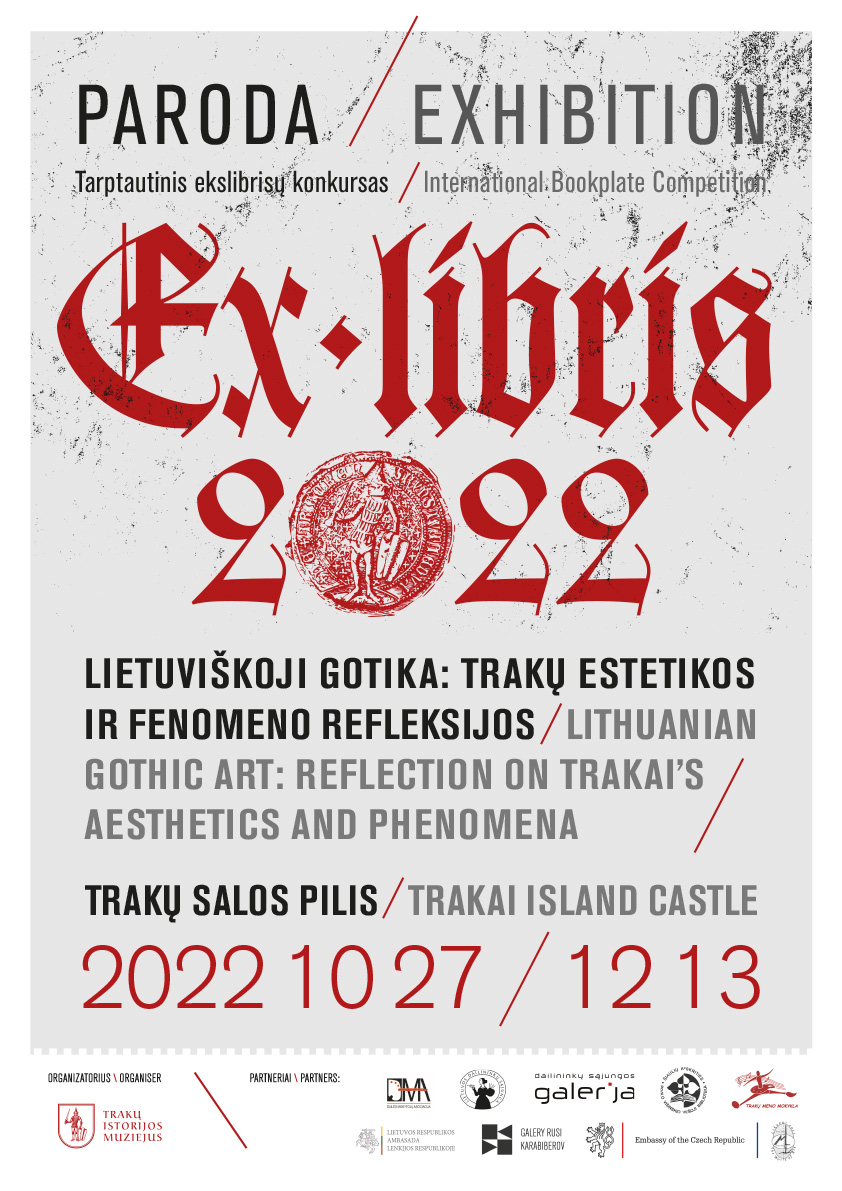
The international ex libris competitions organised by the Trakai History Museum already have an impressive number of regular participants and followers. The new reality brought about by the pandemic and later by the military aggression against Ukraine was just another challenge – not to give up and to pursue the goal with even more persistence. The fact that the number of partic- ipants (established artists as well as young artists who are still searching for their artistic path) is increasing every year proves to us once again that cultural professionals are capable of turning all of the challenges of the present into new opportunities. The title of the last competition – “Lithuanian Gothic Art: Reflection on Trakai’s Aesthetics and Phe- nomena” – reveals the essence of medieval art, between light and shadows, between the incident ray and its reflection, between the ruling grim asceticism and aesthetic emotions. The natural light reflecting from the surfaces of carved sculptures or coming through the stained glass windows of churches and cathedrals was equated by medieval theologians to divine light. Medieval art made clever use of these light effects to cre- ate images and notions and constantly transform and modify them. To paraphrase the eminent French art historian Henri Focillon (1881–1943), the creatures of Gothic art are a delicate grid of deep shadow, dense and continuous, in which a labyrinth of ornament and image clings to a block of stone... There is something of everything to discover in the aesthetics of the Gothic heritage of the city of Trakai – calmer surfaces and modelling on large, simple planes that light falls easily on, radiant stained glass windows of architectural monuments that preserve the monumentality of Romanesque calligraphy, reminding us of the 14th–16th centuries, and Gothic paintings and frescoes that use artistic expression to “quote” the Holy Scripture and life on earth in contrast to heavenly history. This is an invitation for artists to share reflections “embodied” in an ex libris about Lithuanian Gothic as the “modernism” of medieval Lithuania. When it becomes clear that the usual interpretive model (or set of criteria) presented to everyone has insurmountable contradictions and is unable to solve certain long-standing problems, it is time for a new paradigm – to get rid of the ste- reotypes that form the problem of the well-known Gothic style. We are provoking a properly defined and understandable paradigm that provides many benefits to the creative space, from descriptive, iconographic, componential and formal analysis to social, philosophical, intellectual and contextual integration. We invite you to look at Lithuania’s Gothic heritage in a completely new and comprehensive way, and to try to solve complex historical problems such as the oxymoron “light of darkness”. The participants of the competition (especially those who won the universal sympathy of the panel of judges) pleasantly surprised everyone with deeper studies of the theme, not limiting themselves to the language of the most commonly used symbols, and looking for a distinctive and unique expression of Trakai aesthetics by building on the foundation of the medieval era and reflecting that uniqueness in a mirror of deep personal reflection and forms of artistic expression. Each and every ex libris is important to us not only for its material form and enduring value, but also for the experiences and philosophical feelings that the par- ticipants had during the creative process. We have come to realise that the theme of the competition was like a complex algorithm that everyone solved in their own way, looking for their own methods and manners of working it out. And all of the artists came up with different but correct answers. Those answers – the aesthetic reflections of small graphic design that were created – illustrate the pages of the catalogue and will turn into traveling exhibitions that will make their way throughout Lithuania as if they were medieval pilgrims. Their path will likely lead elsewhere as well. May the restrained Gothic gran- deur that is distinct to the layers of heritage in Trakai become a reflection of the image of life bathed in light. Through the works of art created by the participants for this competition, we can get a look of the aesthetic phenomenon of the city celebrating its 700th anniversary. May the diversity and originality of the creativity of the Gothic era, embodied in the masterpieces created by generations past, make them a constant source of inspiration and refreshment for the eyes and spirit of the modern 21st-century artist.